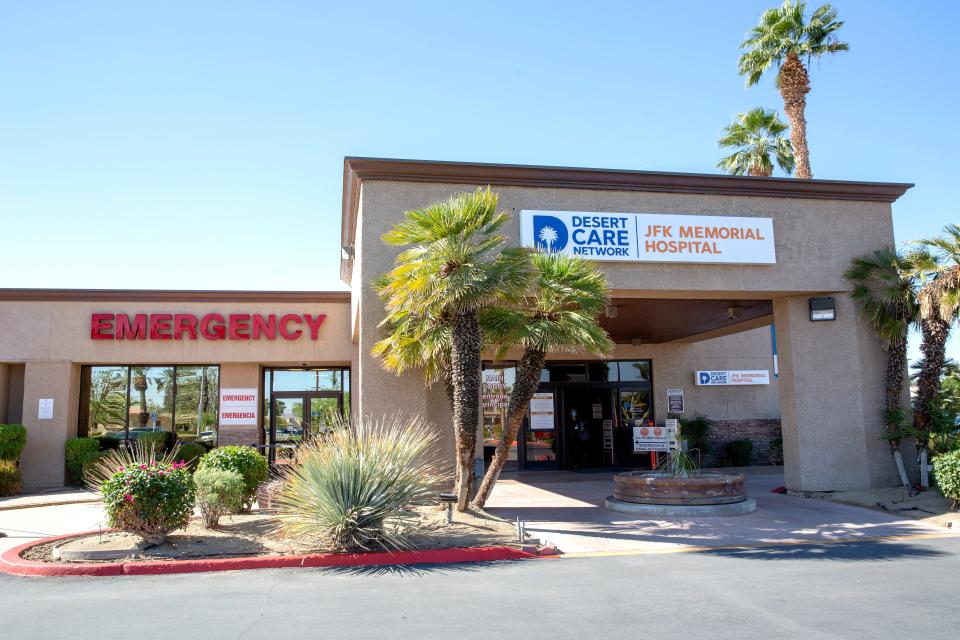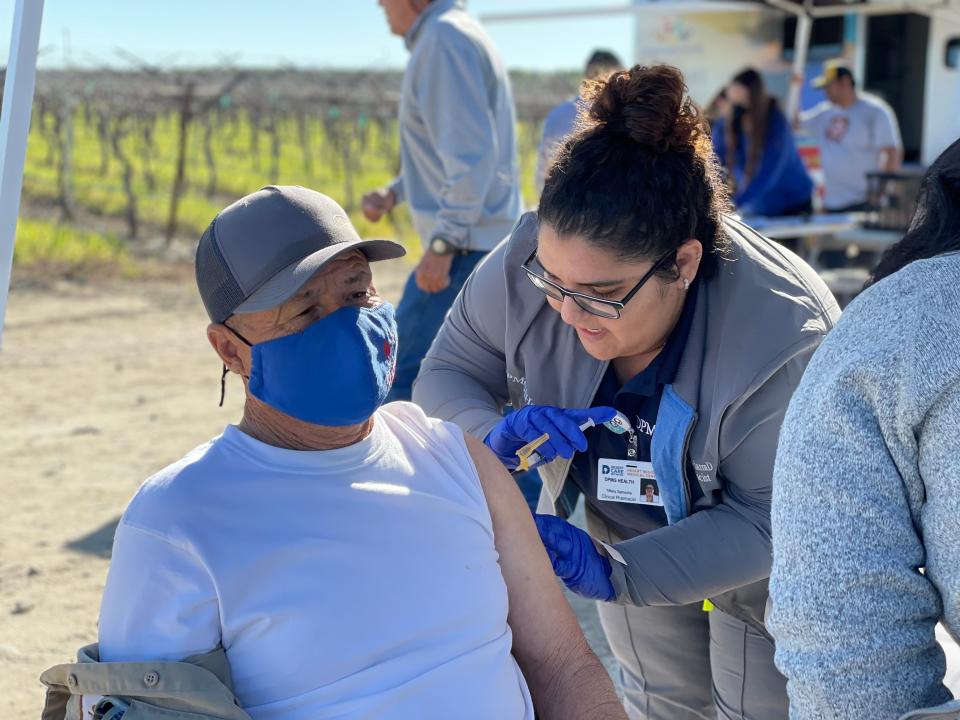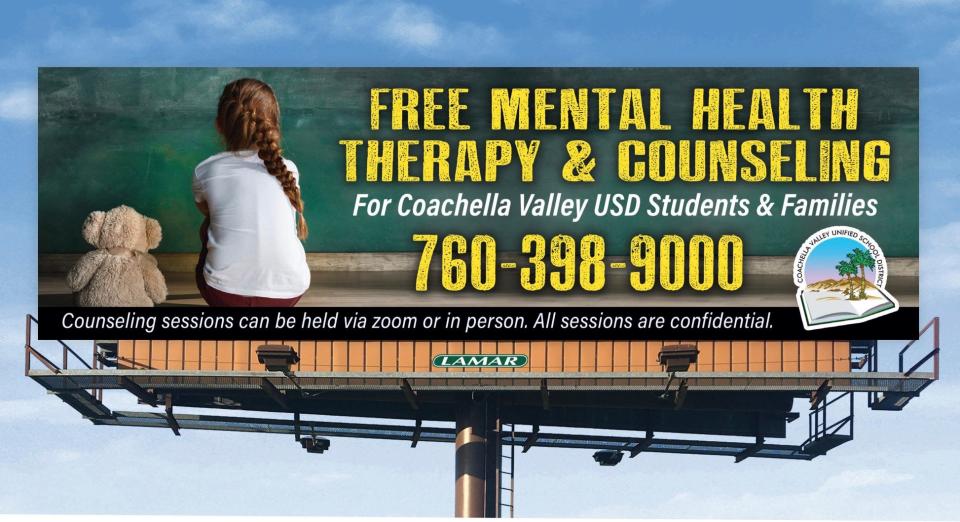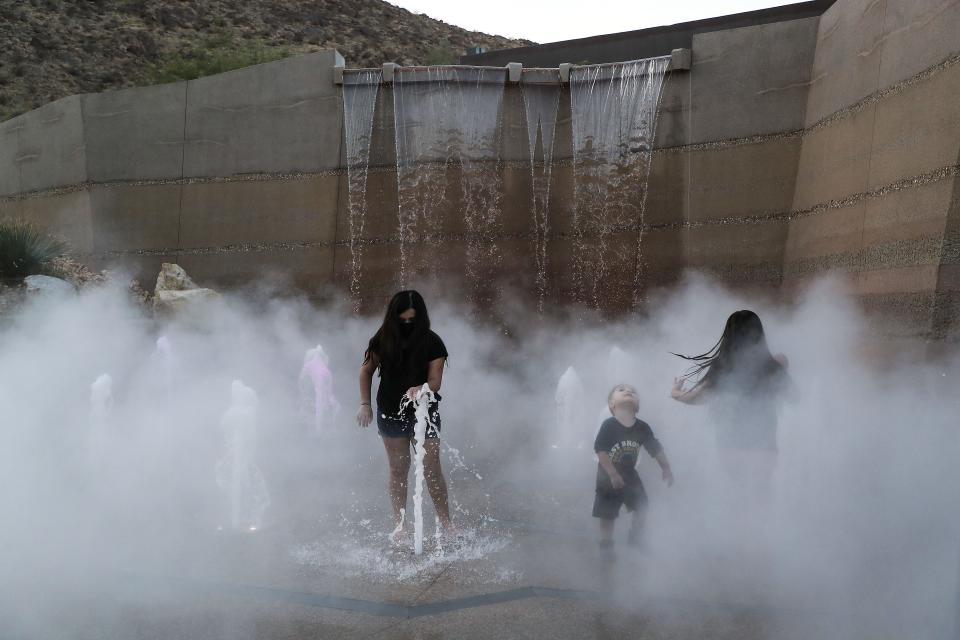HARC health survey breaks down issues residents face with food insecurity, insurance since pandemic
More Coachella Valley residents had health care insurance in 2022 compared to the past 15 years, but many also struggled to put food on the table and have access to health care, according to the latest Coachella Valley Community Health Survey released Tuesday.
Every three years, Health Assessment and Research for Communities, a nonprofit research and evaluation firm located in Palm Desert, conducts a random health survey of households in the Coachella Valley. The survey covers topics such as health care coverage and utilization, health behaviors, major disease, mental health and more. The survey is conducted in English and Spanish, and it covers both adults and children.
The survey released Wednesday offered a comprehensive look at the local health landscape following the COVID-19 pandemic.
"You can't improve the health and wellness of our Coachella Valley if we don't regularly measure it and measure the progress we're making for improvement," Teresa Hodgkins, PharmD, vice president of clinical quality initiatives at Desert Oasis Healthcare, said during a virtual report presentation.
Last year, 18,000 randomly selected households were mailed an adult survey along with a pre-incentive of $2. Adults who completed the survey and also indicated they had a child in the home were then mailed a child survey and offered a $10 post-incentive for participating. The information was collected and then weighted using data from the U.S. Census Bureau’s American Community Survey.
The final sample included 2,790 completed surveys, weighted to represent the entire valley population of more than 430,000 people.

The full report can be accessed at harcdata.org/coachella-valley-community-health-survey/executive-report/.
Adult survey results
There are more than 330,000 adults living in the Coachella Valley. About one in five adults live in households that fall at or below the federal poverty line, and 51% live in households that earn an annual income below $50,000. Additionally, 12.4% of Coachella Valley seniors (ages 55 and older) are living at or below the federal poverty line.
In 2022, adults sought health care at their doctor's office (44.4%), urgent care centers (30.9%) and hospital/emergency room (4.5%). The popularity of doctor's offices have been waning in recent years (although the 2022 rate was an improvement from 37.6% in 2019), while the use of urgent care centers has increased since 2013. The hospital/emergency room rate saw its first significant drop in 2022 (from 9.1% in 2019).
However, there are barriers to care. In the Coachella Valley, the top five barriers to seeking health care include the length of time to get an appointment (36% or an estimated 110,407 people), hours the provider is open to see patients (21% or 61,699 people), understanding what is covered by one's plan (17% or 48,967 people), not having authorization from an HMO (15% or 40,712 people) and taking time off work (14% or 42,102 people).
HARC CEO Jenna LeComte-Hinely said seeing length of time to get an appointment in the top spot "doesn't come as a surprise" given the health care provider shortage in the Coachella Valley and Inland Empire. The ways to recruit more providers, she said, are to "grow your own" through pipeline programs or bring in more residency programs because doctors more often care for patients where they grew up or where they completed their residency.
When it comes to the percentage of uninsured adults (ages 18 to 64), 13% were without health care coverage in 2022. LeComte-Hinely said the rate is "the best it's been" in the 15 years that the nonprofit has been tracking surveys, likely due to emergency measures that applied to Medi-Cal during the COVID-19 pandemic that helped people, who would otherwise lose Medi-Cal eligibility, keep their coverage. She estimates, however, that many will likely lose coverage soon. Based on the Consolidated Appropriations Act of 2023, the requirement to provide continuous coverage via Medi-Cal will end on March 31.
The top five most common major diseases in the Coachella Valley are high blood pressure (44% or an estimated 137,552 people), high cholesterol (40% or 122,118 people), arthritis (29% or 87,492 people), diabetes (19% or 58,698 people) and cancer (18% or 49,547 people). Rates for all five diseases increased from the 2019 survey. Additionally, 67% of adults in the area have a BMI (body mass index) that puts them in the overweight or obese categories, slightly more than 2019's 65.9%.
In the mental health field, one in five Coachella Valley adults have been diagnosed with one or more mental health disorders, with the top three being depressive disorders (14%), anxiety disorders (12%) and PTSD (7%). That is a slight decrease from 2019, when HARC's survey found that 28.6% of adults had been diagnosed with one or more mental health disorders. Rates for the top three remained steady.
Additionally, 34% of adults have had an emotional, mental or behavioral health problem in the past year that concerned them, according to the 2022 survey. However, nearly 17% of adults, or more than an estimated 19,000 people, with mental health concerns and/or diagnoses couldn't get the care they needed. LeComte-Hinely said that is a "strong indication" there is a need for more mental health providers, as well as providers who accept Medi-Cal or can offer low-to-no-cost mental health counseling.
Additions to the 2022 survey included questions related to the COVID-19 pandemic. Approximately 27% of local adults have never been tested for COVID-19. Of the estimated 240,400 who have been tested, 47% have tested positive for the virus at least once.
When it comes to vaccine status, 84% of adults are fully vaccinated, 4% are partially vaccinated, 2% are not vaccinated but plan on getting their shots, and 10% are not vaccinated and do not plan on doing so. Among seniors, 87% are fully vaccinated, 3.8% are partially vaccinated, 0.6% are not vaccinated but plan on doing so, and 8.6% are not vaccinated and do not plan to get vaccinated.
Nearly two-thirds of local adults continued to report to work during the pandemic, while 13% said they lost their regular job. The COVID-19 pandemic also impacted people's finances, with 20% of adults saying they had trouble paying for basic necessities like bills or groceries, and 17% having difficulties paying their rent or mortgage.

Similarly, 29.2% of local adults have spent less money on food because they had to prioritize other basic needs, and 14.4% have had to cut the size of their meals or skip meals entirely due to a lack of money. This is a notable uptick from 2019, when rates were 21.3% and 10.4%, respectively. Among the resources available, 15.3% of local adults used federal programs to purchase food (including CalFresh and the Special Supplemental Nutrition Program for Women, Infants, and Children, or WIC), and 17% have received food from a food assistance program, such as a church, food pantry, food bank or soup kitchen.
Another new variable in the 2022 survey asked about racism and intimate partner violence. About 13% (an estimated 40,000 people) of valley adults answered "yes" when asked if they have ever been treated unfairly due to their race/ethnicity. Nearly 2% (more than an estimated 6,390 people) answered "yes" when asked if any intimate partner has pushed, grabbed, slapped, kicked or hurt them in any way in the past 12 months.
Children's survey results
There are more than 89,800 children (ages 0 to 17) in the Coachella Valley, according to the survey. Nearly one-third of local children live below the poverty line, and 60% live in households with an annual income of less than $50,000.
Adverse childhood experiences (ACEs) are potentially traumatic events that can include abuse (emotional, physical, or sexual), neglect (emotional or physical), violence (witnessing an act or being a victim of violence) and instability (substance abuse or mental illness in the household, parental separation or divorce or incarcerated household member). In the Coachella Valley, 29% of children have experienced at least one of these, with 18.7% answering there is someone in the household who is depressed, mentally ill or attempted suicide during the child's lifetime.
LeComte-Hinely said research has shown that ACEs are correlated with events later in life, and if they are experiencing many of these traumatic events, they are more likely to be incarcerated, have lower incomes and shorter lifespans. The results from the 2022 survey illustrate the need for stigma reduction and mental health education and intervention, she said.

"Even if the child isn't having mental health issues, most of them know somebody — a family member, a friend, someone in their household — who is mentally ill or has suffered the consequences," LeComte-Hinely said. "This really needs to be something that we start talking about and stop trying to ignore or thinking that it is shameful."
The vast majority of children in the Coachella Valley have health care coverage (89.8% or an estimated 78,079 children). However, 10.2% (or an estimated 8,879 children) do not have coverage, significantly more than California's rate of 1.6% and Riverside County's rate of 5%.
Additionally, 79% of local children have had a routine check-up in the past year, and 84% have visited a dentist at least once. The vast majority of responses indicated that the child had not had a check-up in the past year because parents/guardians felt there was no need and the child was healthy. Usual sources of care are doctor's offices (43%), urgent care centers (24%) and clinics (25%).
More than half (55%) of children ages 2 and older have a BMI-for-age percentile that puts them in the overweight or obese categories, up significantly from 2019's 46.1%. Of the estimated 37,561 children who are overweight or obese, 78.4% of their parents/guardians believe that their child is "about the right weight" instead of overweight.
What may contribute to those rates, LeComte-Hinely said, is that 9% of children do not have a safe place to play outside, and 39% of children ages 2 and older do not know how to swim, thus reducing various forms of exercise.
Within mental health, 25% of children ages 3 and older have difficulties with emotions, concentration, behavior and/or getting along with others, almost the same as in 2019. One in four local children have been diagnosed with one or more mental health disorders, with the three most common being ADD/ADHD (15%), anxiety (8%) and developmental delay (8%). The 2019 survey reported that 18.5% of children have one or more mental health disorders, with rates for the three top disorders growing significantly since then.
When it comes to COVID-19 vaccination status, 55% of children ages 1 and older are fully vaccinated, 7% are partially vaccinated, 15% are not but their parents plan on getting them inoculated, and 23% are not and do not plan on getting their child/children vaccinated. LeComte-Hinely said the high unvaccinated and no interest to get a jab rate is "concerning," especially because it is much higher than the adult rate (8.6%).

Like adults, children reportedly faced food insecurity. Nearly 40% of local youth live in households that had to spend less money on food because they needed to prioritize other basic needs, and 14% had to cut the size of meals or skip meals. That is another significant uptick from the 2019 survey, when rates were 14% and 4.1%, respectively. The percentage of local children who live in households that use CalFresh/WIC benefits to feed their families has gone from 17% in 2019 to 29.5% in 2022.
The 2022 survey also measured conversations children have with parents/guardians about topics such as racism, bullying, gender identity, sexual orientation and more. Since 2019, it appeared that parents "talked about just about everything" with their child, LeComte-Hinely noted, likely due to the pandemic and distance learning keeping children at home.
"Whereas a child might normally have this conversation or ask a question of a teacher or coach or a mentor in an after-school program, during lockdown, all they had was their parents to ask," she said. "Parents, all of a sudden, had to come up with responses to these questions and start talking about these difficult topics."
The five most commonly discussed topics were racism (80.3%), dealing with anger (77.5%), alcohol (77.1%), drugs (76.9%) and bullying (76.4%). Topics such as self-harm (49.5%) and domestic violence (46.7%) are less likely to be discussed, according to the survey.
HARC’s Coachella Valley data is used by nonprofit health and human services agencies, hospitals, federally qualified health centers, educational institutions and government agencies, among others, to better understand the people who live in the region, apply for funding, prioritize health needs and develop programs to address those needs. Nearly $20 million in funding has been granted to organizations that have used HARC’s data to support programs and services, such as free HIV tests and low-to-no-cost mental health care.
"I'm excited and I have so much anticipation over what people will do with the new data," LeComte-Hinely said. "There's been so many great success stories of people bringing in grants and programs and services to address these needs, and I'm really excited to see what new stuff happens as a result of this, and not just having updated numbers, but the new stuff, the stuff about COVID, our kids being uninsured. How can we address that?"
HARC also has additional surveys underway regarding asthma symptoms for people living around the Salton Sea, making clinical trials more accessible to underserved people and a traumatic brain injury needs assessment. To access special reports or learn more about HARC, visit harcdata.org.
Ema Sasic covers entertainment and health in the Coachella Valley. Reach her at ema.sasic@desertsun.com or on Twitter @ema_sasic.
This article originally appeared on Palm Springs Desert Sun: HARC survey highlights health issues local residents face

